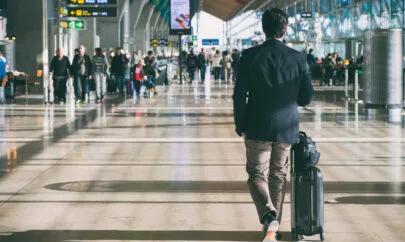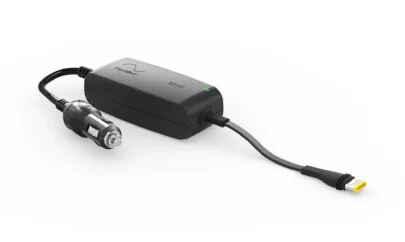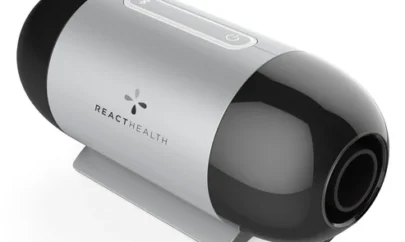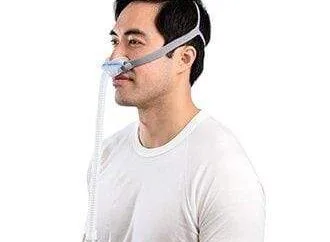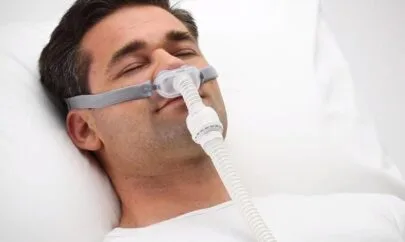
Travel APAP Machine Guide: Packing, Power Options, and Airline Rules
If you suffer from sleep apnea, traveling with your APAP (Auto-Adjusting Positive Airway Pressure) machine for the first time may seem quite daunting. Thanks to technological advances, modern travel APAP machines are a revolutionary solution for those who require continuous therapy while on the move.
Leading models like the ResMed AirMini machine have been designed with travel in mind and are compact, lightweight, and loaded with features. Special features include waterless humidification, auto-adjusting pressure, and silent operation, ensuring your sleep therapy continues seamlessly, whether at home or away.
There are many factors to consider when choosing the most suitable travel APAP machine. This includes size, power options, and compliance with airline regulations. This guide will cover essential tips for packing your APAP machine, managing power and battery needs, and complying with airline policies when going abroad.
Whether you are a frequent traveler or on occasional holidays, we will help you make informed choices to enjoy a good night’s sleep wherever you are.
Packing Your APAP Machine for Travel
Choosing the Right Travel Case
You must pack your machine correctly to prevent damage while traveling. Choosing the right travel case can help you do this and make transporting your machine easier. Choose travel cases that are specifically designed for CPAP or APAP machines. These are typically more durable yet lightweight and have additional pockets and compartments for organizing your machine’s separate components.
Companies like ApriaDirect offer various CPAP travel bags and cases to meet your requirements and suit your personal preferences. This includes backpacks, totes, complex cases, and rolling luggage.
General Packing Tips
General tips include making sure your APAP equipment is clean and dry. This consists of the humidifier water chamber to prevent the growth of mold and mildew. Carrying extra supplies such as mask cushions, headgear, and filters can be helpful in case of any damage or breakages.
If you have a manufacturer’s carrying case, this is ideal as it provides the best fit and protection for your machine. Placing your APAP machine in a clear plastic bag can prevent contamination during security checks.
If you plan to use your humidifier, you may require bottled water, as tap water can contain minerals that may damage your machine.
Documentation to Carry
Carrying the appropriate documentation when traveling with an APAP machine is essential. This includes a copy of your prescription, a legal requirement for operating and carrying such medical devices. Also, bring a copy of the manufacturer’s FAA compliance notification, especially if you need to use your APAP machine during a flight. This can help prevent delays and resolve any questions with airline staff or security.
Navigating Power Options and Battery Usage
Understanding Battery Packs
If you travel to a remote area where electricity may be limited, battery packs for your APAP machine are essential. Battery packs can provide power for several hours, ensuring you can maintain your sleep therapy even without a power outlet.
For instance, the ResMed Power Station II (RPS II) offers up to 13 hours of power for your ResMed APAP machine and is remarkably lightweight. A spare battery pack is also helpful for extended trips or flights. Make sure you choose the correct battery pack for your APAP machine.
International Voltage and Adapters
If you are traveling abroad, it is essential to consider voltage and adapter compatibility. Most modern APAP machines are dual-voltage, operating from 100V to 240V. Check the power adapter label to ensure your machine will work with different voltage requirements abroad. If not, you will require a travel voltage converter, such as the PU-200, which can handle devices with power requirements under 200W. Also, you will need the correct plug adapters for where you travel.
Universal travel adapters, like the Transcend Universal Plug Adapter, are highly versatile and compatible with outlets in over 150 countries, ensuring you can continue your therapy wherever you travel.
Charging Tips for Long Flights or Drives
To make sure you are prepared for a long flight or drive, it is essential to make sure your battery pack is fully charged. For long flights, you can contact your airline in advance to confirm the availability of power outlets. You can choose a seat near a power outlet to charge your machine as necessary.
For battery-powered operation, as mentioned, your battery should be fully charged, and it is crucial to carry a spare battery in case the first one runs out. Charging your battery can take less than four hours when connected to an electrical outlet, making it feasible to recharge where possible.
Understanding Airline Rules and Regulations
FAA Regulations for In-Flight Use
Following Federal Aviation Administration (FAA) regulations is essential when traveling with an APAP machine. Your CPAP or APAP machine must be labeled as approved for in-flight use. The manufacturer provides this and indicates that the device meets FAA safety standards.
Your APAP machine should be battery-operated, as in-seat power outlets for CPAP devices may be restricted on certain flights. It is recommended to have sufficient battery power to last 150% of the flight time.
Communicating with Airlines Before Travel
You must contact your airline and inform them that you require an APAP machine to ensure they can accommodate your needs. You may need to provide documentation such as your prescription and an FAA compliance letter.
Policies regarding APAP machines can vary from airline to airline. United Airlines requires 48 hours’ notice and asks passengers to provide proof of FAA approval. At the same time, Delta Airlines may request to see the FAA approval label and sufficient battery power for the duration of the flight plus 50% extra. Speaking to your airline beforehand can prevent any confusion or unnecessary delays during your flight.
Handling Layovers and International Flights
If you have a long-haul flight or transit, you must plan accordingly. You must have the necessary documentation to cover the entire duration of your travel. For longer transits or layovers, you can use the power outlets at the airport to recharge your batteries if necessary for the rest of your flight.
It is important to remember that different countries’ power outlet types and voltage requirements vary. You need to ensure that you have the appropriate adapters and converters to use your APAP machine wherever you are.
Conclusion
Traveling with your APAP machine may seem daunting, especially the first time. With careful planning and preparation, you can enjoy a good night’s sleep wherever you are in the world. In case of accidental damage or breakage, you must pack your machine carefully and carry all the necessary parts, including extra parts if possible.
You must speak to your airline beforehand and let them know that you will be traveling with an APAP machine to reduce any unnecessary delays or confusion during travel. It is also essential that your batteries are fully charged.
You should carry a spare battery pack and any necessary converters or adapters for the country you are traveling to. Speak to your airline in advance for more information. This will allow you to travel with confidence while managing your health. Sleep apnea should not prevent you from traveling. With the proper preparation, you can sleep peacefully and enjoy your adventures around the globe.




